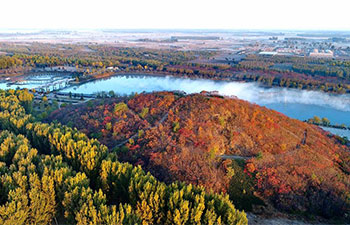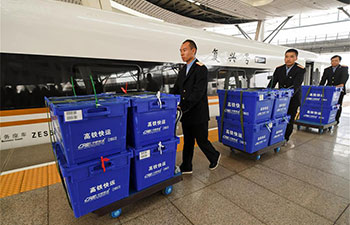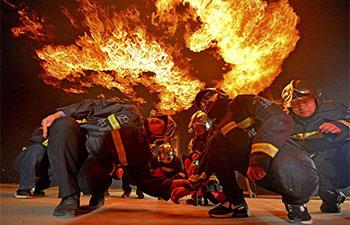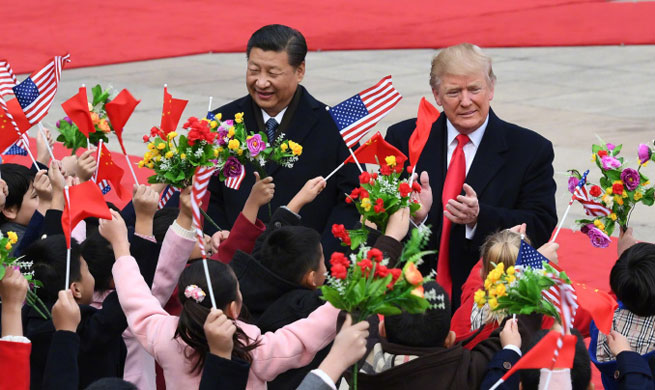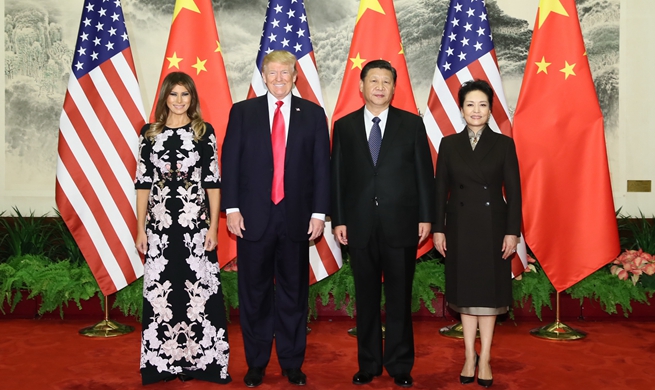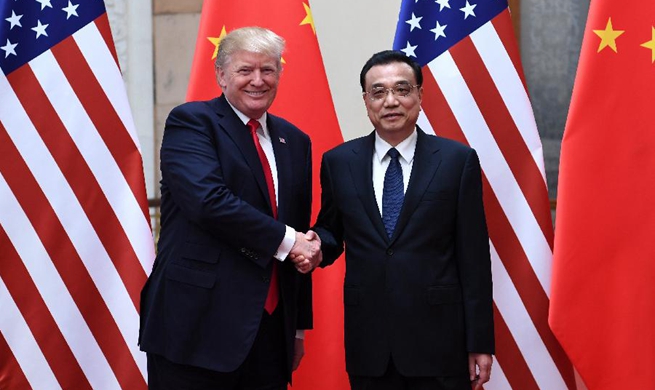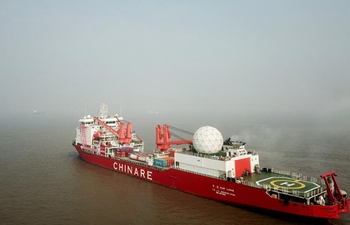BRUSSELS, Nov. 9 (Xinhua) -- NATO has said it will commit more troops to support national forces in Afghanistan and create two new command centers in Europe, in a notable expansion of the military alliance agreed during a 2-day defense ministers' meeting ending here on Thursday.
NATO's Resolute Support Mission, which, since January 2015, has backed Afghanistan national forces in an ongoing struggle against Taliban insurgents, received commitments from the United States and 27 other nations to increase troop numbers, expected to rise from 13,000 to 16,000. The defense ministers also agreed to continue funding Afghan security forces until at least 2020.
"I strongly welcome the strengthened commitment and support demonstrated by allies and partners," said NATO Secretary General Jens Stoltenberg at a press conference on Thursday.
The increased commitment came from talks following a briefing by U.S. Defense Secretary James Mattis and senior American officials that outlined their new South Asia strategy and which included higher troop numbers.
U.S. President Donald Trump, who had created controversy in January 2017 by claiming NATO was "obsolete", announced in a statement in August that he was committing more troops to Afghanistan.
He said he was doing so against his instincts, in order to find an "honorable and enduring outcome" since the U.S. entered into war with the Taliban in 2001.
Since his inauguration, Trump has pushed for other NATO allies to increase defense spending and take more responsibility for the alliance.
The two days of meetings between defense ministers seemed to indicate a move towards increased emphasis on Europe, with the announcement of two new command centers to be developed, along with new infrastructure requirements.
A new Atlantic command was agreed on Wednesday to pursue maritime security and protect sea lanes for U.S. reinforcements of European allies in the advent of conflict.
While troop deployments and base numbers will remain lower than Cold War peaks, levels are still expected to grow, with significant increases in NATO presence in eastern allied states since tensions heightened between the military alliance and Russia.
A new logistics command is also planned to facilitate the swift movement of troops and equipment across European allied states. The logistics push will also include updated infrastructure guidelines for national governments, to ensure that national transportation routes can accommodate the movements of military forces and, notably, border crossings.
"We need to ensure that national legislation facilitating border crossing is fully implemented. We need enough transport capacity at our disposal, which largely comes from the private sector. And we need to improve infrastructure, such as roads, bridges, railways, runways and ports," Stoltenberg said in a press conference on Wednesday.
Agreed upon by the defense ministers of allied members, the two additional commands will be discussed in detail by military commanders, with proposals to be put forward in February 2018, Stoltenberg said.
Defense ministers also agreed Wednesday that a new cyber operations center would be included as part of a revised NATO command structure.
"We must be just as effective in the cyber domain as we are on land, at sea, and in the air, with real-time understanding of the threats we face and the ability to respond however and whenever we choose," said Stoltenberg.
The NATO chief said, however, that the use of cyber capabilities would always adhere to international law.





